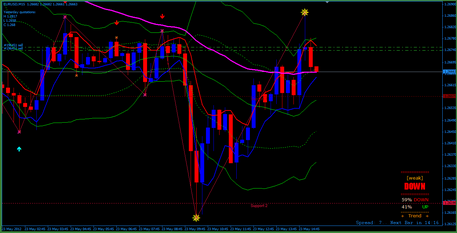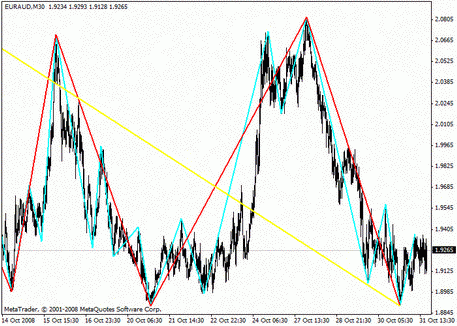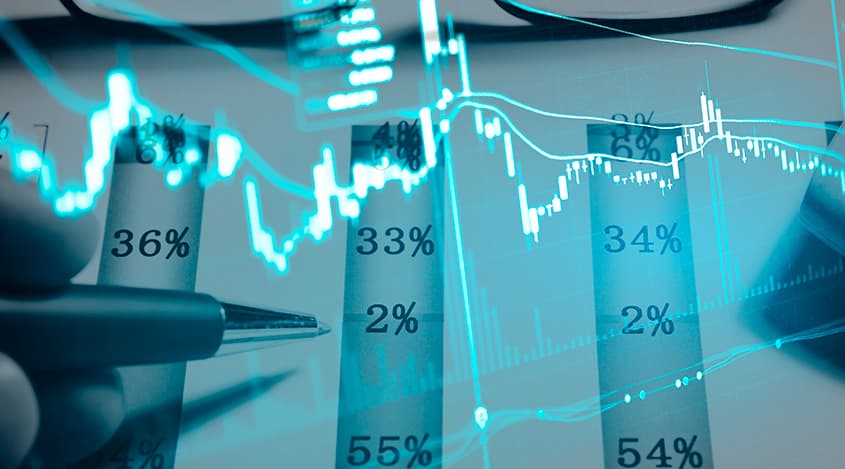
Forex Trading Systems
Thursday, 10 August 2017 01:28
The trading system is a set of rules, algorithms and trader’s decisions, which is based on the results of technical analysis of the market. Any trading system implies certain standards for opening and closing the positions, a particular size of the timeframe, the rules of money management and risk management. Using a trading system, a trader relies less on emotions and excludes the erratic trading.
As a rule, all the beginning traders eventually start searching for a strategy that would provide the control over the risks, and increase the profits. Experienced traders can also combine different tactics, depending on the market conditions at the moment.
Types of Strategies
There are many various methods of trading. Some are more suitable for active traders who can make deals quickly, increasing the profit due to the number of executed orders. Others are appropriate for the long-term trading. Each system is built on a particular theoretical basis, instruments, or the developer's opinion. Anyway, the strategy becomes popular if it can bring a stable income.
There are several groups of the most popular trading systems.
- Trend systems. The most common Forex trading strategies based on the upward and downward trends, considering their strength and duration. In particular, this group includes tactics based on the moving averages.

- Flat strategies. Unlike the trend ones, these techniques are designed for use in periods of flat and low market activity. These methods are based on the construction of price channels. Trade is made within this channel, on price rollbacks from the borders. These tactics often use the oscillator indicators that are sensitive enough to small fluctuations in the value of an asset.
- Strategies of trading against the trend. This approach involves finding the points of the trend reversal. With the correct identification of such points, it’s possible to make the deals with the maximum profit. Most of these tactics are based on Bollinger instruments, such as Bollinger bands, or Alligator.

- Trade on Fibonacci levels. This group includes approaches based on multiple levels of resistance and support, which are built in mathematical dependence expressed by the Fibonacci series. These systems combine features of trend and wave strategies, as well as the pattern analysis.

- Breakdown of volatility. This type of trading is based on a value break through a certain range, with the strong trend formation. The strategies of this group often use tools such as the Dolciani channel, or the Keltner channel.
- Pattern analysis. There are the methods of graphical analysis that study figures on the price chart (for example, "head and shoulders," "triangle," or "double top"), and the candlestick analysis. Candlestick analysis determines established combinations with one or more candles. Attention is given to their location, color, body size, and shadows.

- Session tactics. Since currencies are traded with a different activity, depending on the time of the world exchanges operation, traders make deals on a particular currency pair at a certain time. For example, the yen is traded during the periods of the Asian session, the Swiss franc - at the European session, and so on.
- Scalping. These are modern methods of trading, which involve making the short-term transactions, with minimal Take Profit levels and a significant number of stop orders. The benefit received from the trade depends on the number of deals made.
- Methods of wave analysis. This group includes strategies based on the Elliott Wave Theory. The theory relies on the view that market behavior depends on the mood of traders and can be expressed in the form of waves. These methods can also be combined with Fibonacci numbers.

- Combined methods. Many systems are based on a combination of different approaches. Often, such systems are the most reliable and flexible within volatile market conditions.
Each trader must choose a system that will bring the greatest profit by his own. Any tactic has its supporters and opponents, its pros and cons. You’ll be able to determine the effectiveness of the strategy, just by trying it in practice.
Before you start trading on a new system, it's worth applying it to a demo account to explore all the possible risks.
Share
Related articles
- Previous article: Trading Signals
- Next article: Expert Advisors

 English
English
 русский
русский



